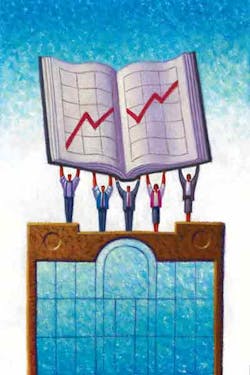U.S. Industrial Production is the major benchmark used by The Institute for Trend Research (ITR) when talking about the U.S. macroeconomic environment. The U.S. Industrial Production growth rate has slowed to 3.8 percent as compared to a growth rate of 4.0 percent for all of 2006.Many readers are no doubt seeing a similar trend in their in-house order levels; orders are up year over year, but the trend has become uneven, to say the least. Expect slower growth, concerns over the future and a growing sense of uncertainty to characterize the rest of 2007. We do not feel there is cause for concern regarding a recession in 2007 or in the first half of 2008. There will be time enough for recessions later.The forecast calls for U.S. Industrial Production to end this year 2.7 percent ahead of 2006, followed by a 2.4 percent growth rate in 2008. Plan on more sales opportunities, but keep in mind a growing competitiveness and that it will be increasingly difficult to raise prices, despite some underlying inflationary pressures.A word about labor is in order. Many firms are out hunting for qualified people for varied positions. The strength of the economy and the low unemployment rate mean that qualified labor is harder to find and will be more costly once found. This is called wage inflation. There is not much you can do about it except to keep current employees happy and provide sufficient in-house training and incentives to minimize your need to go “outside” for help. We would also suggest that you remember you are likely to need less, not more, fixed and variable labor two years from now. Try using contract labor, overtime and subcontractors when possible.Fed on trackWage inflation is a fact of life in the United States and other global economies (including China ). Wage inflation eventually finds its way into the cost of production and then into the cost of consumer goods, largely because wage gains are outpacing productivity gains. This underlying inflationary pressure will most likely keep the Federal Reserve Board on its current track to leave interest rates alone for now, with a greater tendency to raise rates later this year or in early 2008.Readers servicing firms directly or tangentially related to the housing industry are well aware of the current difficulties and of the varied projections regarding a recovery in the industry at large. Our analysis leads us to conclude that the drop in housing starts may level off around mid-2007, but that an overt and extended recovery is not likely. Readers should plan on stability more than recovery in the housing industry in the latter half of 2007 and in the first half of 2008.Those of you serving the automotive industry are faced with a series of challenges, ranging from the changing face of Detroit (e.g. the sale of Chrysler) to the proposed introduction of $3,000 cars in Russia , India , China and other parts of Asia . The latter offers opportunities to sell whole new lines of products to the manufacturers lining up to produce the automobiles and parts in these new modern factories.Chemicals & Allied Products Production is walking in the footsteps of its larger sibling, U.S. Industrial Production, as it transitions to Phase C, slower growth. The data trend is essentially flat right now. We think a mild decline later this year will bring the year as a whole in about 2.3 percent below 2006. There are internal indications in support of the forecast, and these are buttressed by the decline evident in the U.S. Leading Indicator. 2008 will recover those losses and then some, with a projected 3.6 percent annual growth rate.Alan Beaulieu, [email protected], is Senior Analyst, an economist and a Principal with the Institute for Trend Research, in Concord , N.H.
About the Author
Sign up for our eNewsletters
Get the latest news and updates

Leaders relevant to this article:
